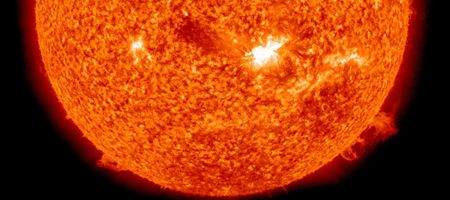NASA’s Solar Dynamics Observatory has discovered new characteristics of solar flares – with great timing, as one’s due to hit Earth tomorrow.

Using SDO’s Extreme ultraviolet Variability Experiment (EVE) instrument, they’ve found that the radiation from solar flares continues for up to five hours beyond the main phase.
Indeed, the total energy from this extended phase of the solar flare’s peak sometimes has more energy than the initial event.
“Previous observations considered a few seconds or minutes to be the normal part of the flare process,” said Lika Guhathakurta, lead program scientist for NASA’s Living with a Star Program.
“This new data will increase our understanding of flare physics and the consequences in near-Earth space where many scientific and commercial satellites reside.”
For decades, scientists evaluated flares by watching the X-rays as they happen and oberving when they peak. Mysteriously, though, peaks were appearing that didn’t correspond to the X-rays.
Over the course of a year, the team used EVE to map each wavelength of light as it strengthened, peaked and diminished – recording data every 10 seconds and examining all wavelengths simultaneously.
Alongside this, scientists used images from another SDO instrument, the Advanced Imaging Assembly (AIA). Analysis of these images showed coronal loops that appeared far above the original eruption site. These were longer and became brighter later than the loops from the main flare.
The team is now studying how these late phase flares can influence space weather. A solar flare that erupted on Tuesday is due to hit Earth tomorrow, and the National Weather Service’s Space Weather Prediction Center says the northern lights may be slightly more visible.
However there should be no radio, satellite or electrical grid disruptions, it says.






